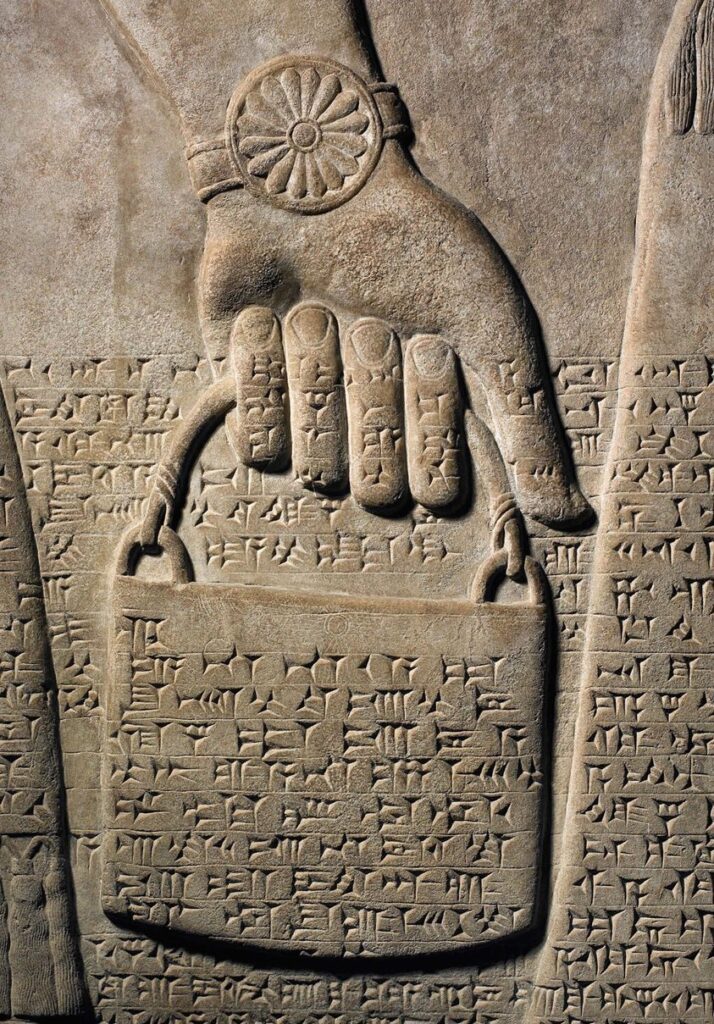
The Walters Museum of Art translates Apkallu as a “winged genius”; other museums which have wall panels from the palace of King Ashurnasirpal II describe Apkallu as a “sage,” or a “genie.” These ripped, winged humanoid figures stood at the entrance of doorways in the palace, offering blessings or protection to passersby with a pine cone dipped into a small bucket of anointing liquid.
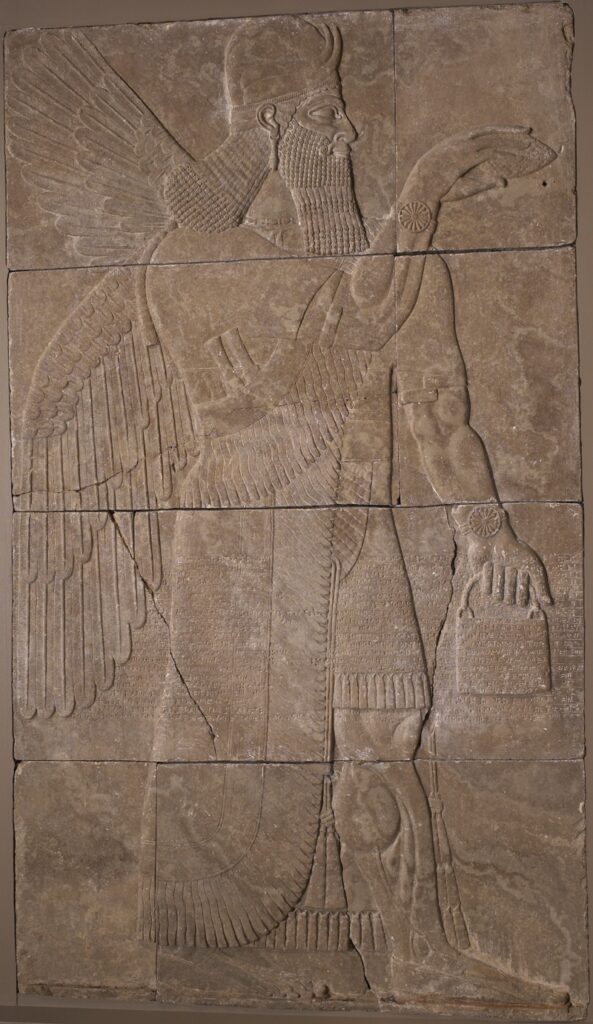
There is obviously much that can be said about Apkulla style: the feathered or fishskin cloaks; the fringed kilts; the beards, the workout, the armbands; the daggers; the horned diadems; the earrings; the rosette-covered wristbands. For starters, let’s just look at the bucket, or as Reddit is fond of calling it, the Handbag of the Gods.

The bag on the Walters panel and a panel at the Brooklyn Museum are both crossed with cuneiform, what is known to as the Standard Inscription. Interestingly, the Walters is the only site I’ve seen that provides a translation of this boilerplate praise of the ruthless king, which was repeated everywhere in the palace.
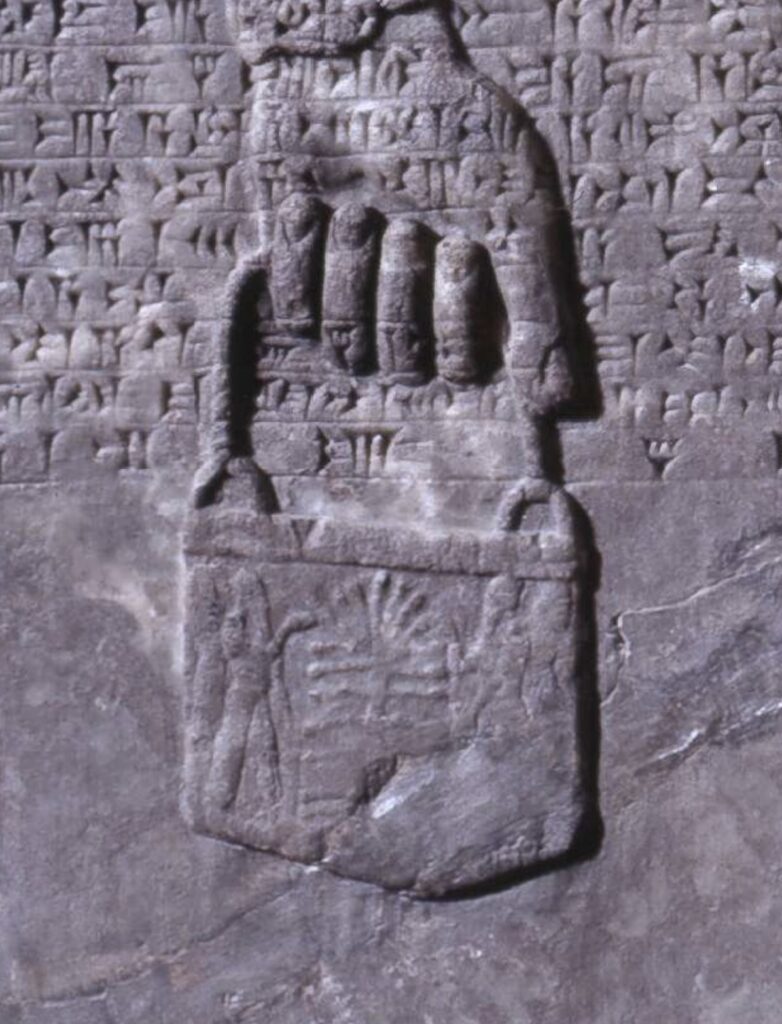
The reliefs in the US are just loosies. When Sir Henry Layard excavated Nimrud in the 1840s, the British Museum took entire roomsful of relief panels, and kept stuffing them in the basement even after the galleries were full. The Apkulla relief above, not on view, carried a bucket with its own relief: an embossed design of apkullas and perhaps the king around the Tree of Life, a frequent motif.
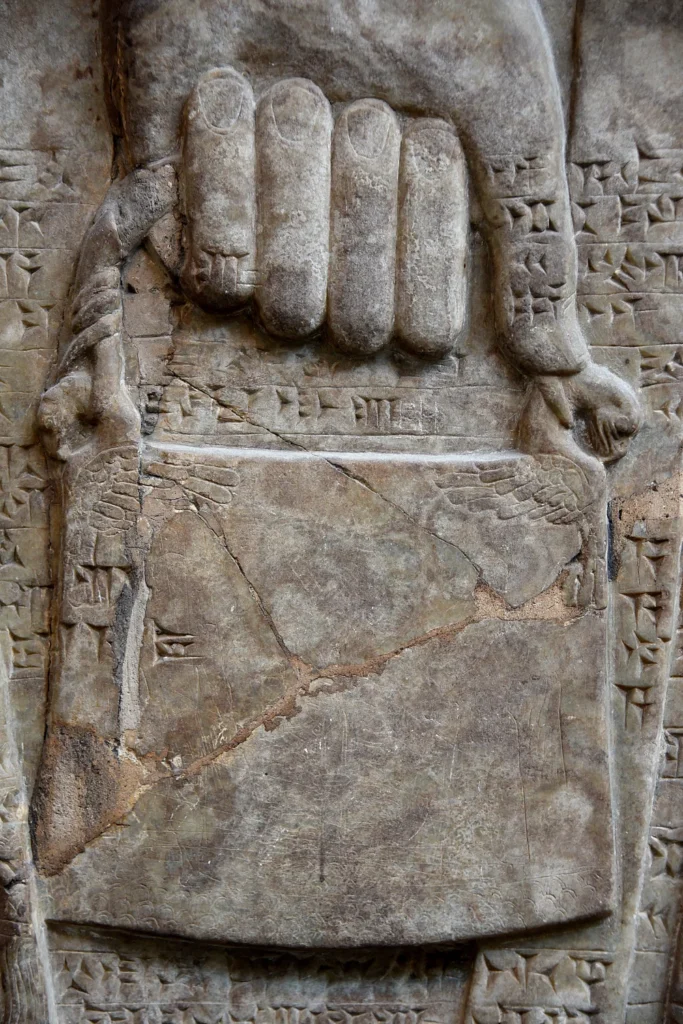
Most buckets have similar twisted handles attached to loops. The Apkulla on Panel 2 in the Nimrud galleries at the British Museum is attached to brackets of a bird motif, the engraved wings and feet of which extend around the bucket. It is but one example from Osama Shukir Muhammed Amin’s extensive examination of Apkulla iconography published on WorldHistory.org. Which we will no doubt be consulting regularly as the Apkullacore Capsule Collection comes together.
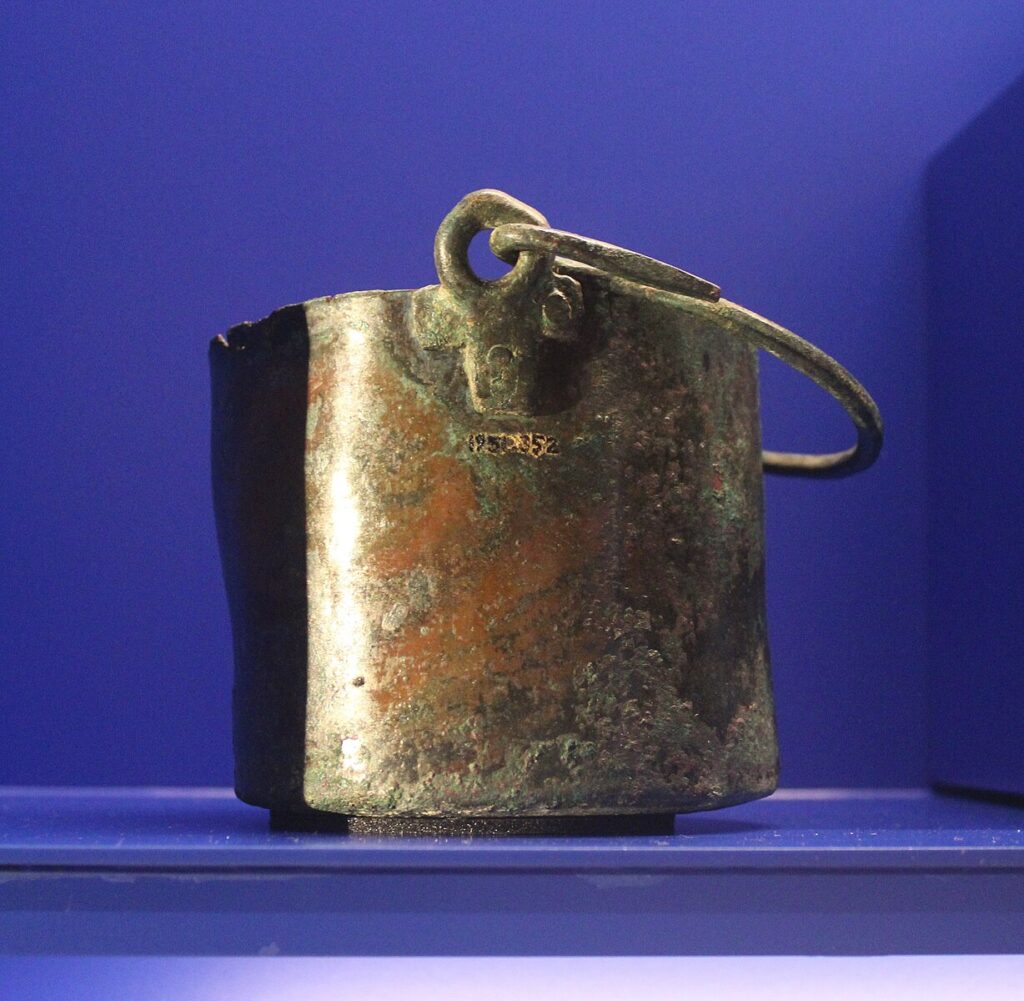
As the surviving example at the Ashmolean suggests, Assyrian buckets were of copper alloy, and it may indeed be desirable to make an Apkulla bucket bag of metal. But there are enough stylistic variations in the source material to warrant exploration through other mediums.
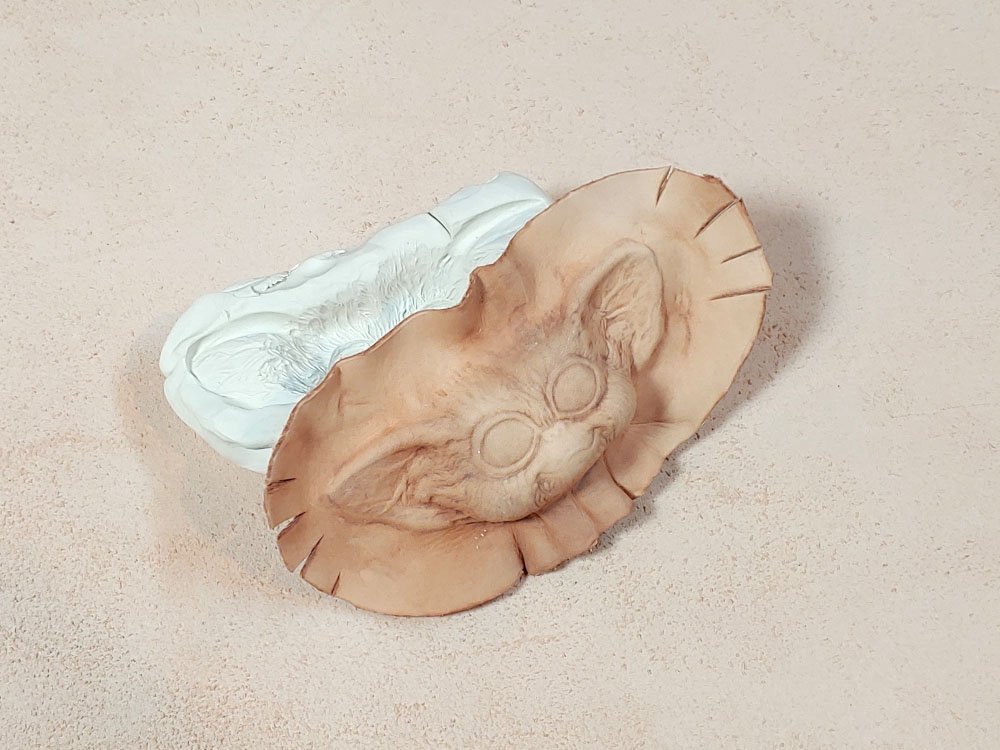
Wet-molded, vegetable tanned leather would capture the embossed figures above. I mean, just look at what skilled artists can do with a gremlin head, a Sculpey mold, and a bowl of water. The standard inscription could just be worked in, summer camp-style, with a set of cuneiform dies and a mallet. The spread-winged hardware could be worked out of fine copper [side eyeing Ea Nasir rn].
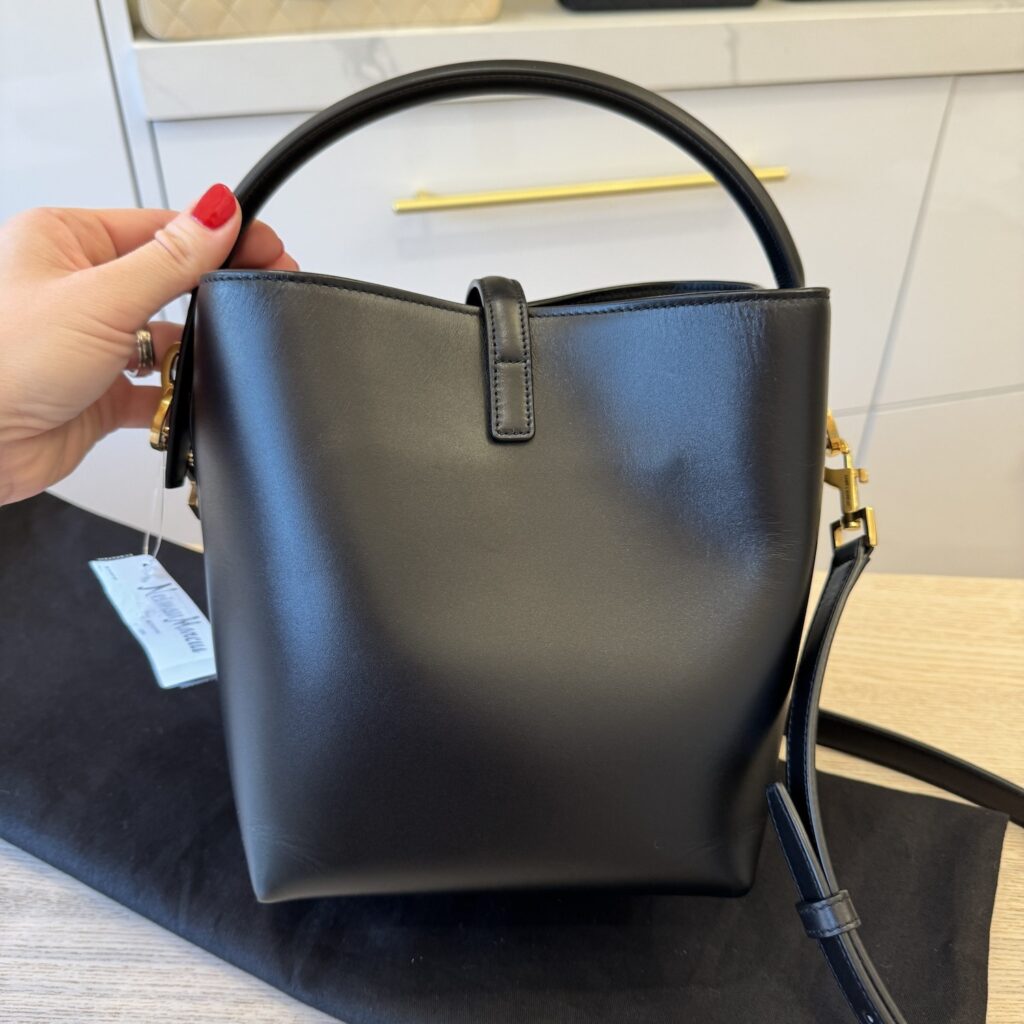
The Ashmolean bucket seems a little small to be useful for anything but anointing, tbh, but the Apkulla Bucket Bag should keep the same relative scale to the hand. At 15 cm tall and 13 cm across, this Saint Laurent le Mini 37 feels close in size, and has a simplified construction that resonates with the original.
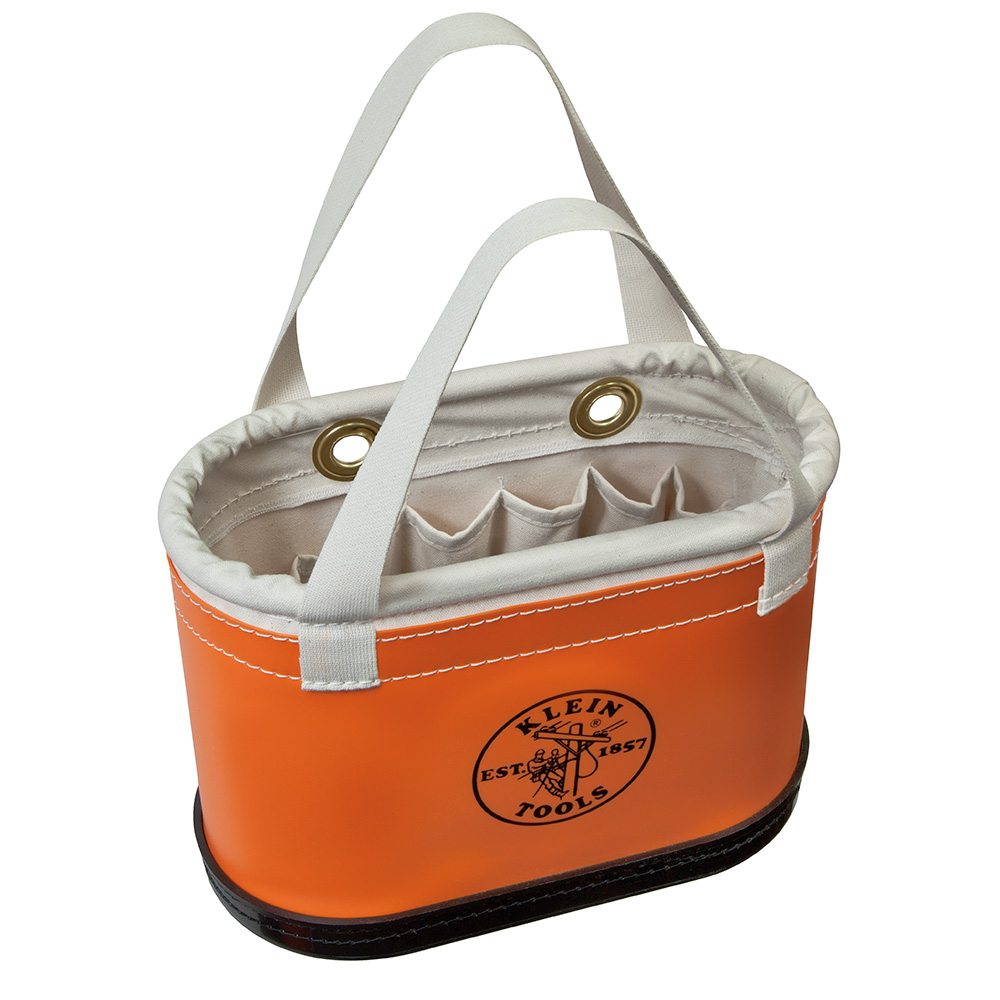
Another direction, of course, could be the orange shell of the classic Klein Tools bucket bag. Screenprint the cuneiform and emboss the Tree of Life scene with HDPE vacuum-forming. The smooth finish would look like an enlarged cylinder seal cast. Besides Layard’s own sketches, there are fragments of wall paintings that give a hint of some other Assyrian colorways, for Spring/Summer.
